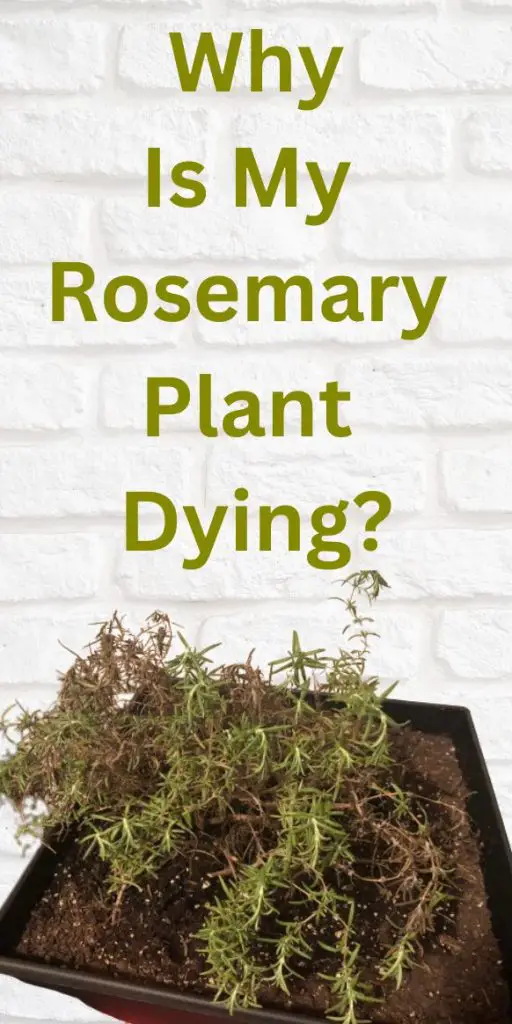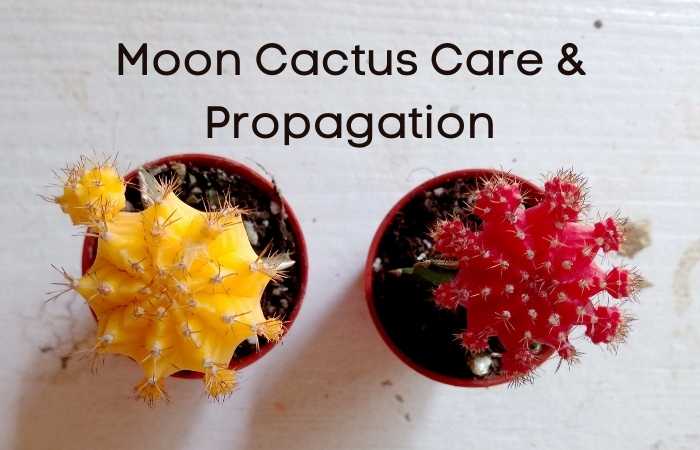Why is My Rosemary Plant Dying: Causes and Solutions

Why is my rosemary plant dying all the causes and solutions that will help you save your plant. I love rosemary herbs for their culinary uses, medicinal properties, and ornamental beauty.
Why is My Rosemary Plant Dying?
Rosemary plants are easy herbs to care for. However, witnessing a once-thriving rosemary plant deteriorate can be distressing.
Fortunately, with proper understanding and timely intervention, it is often possible to revive a dying rosemary and restore it to robust health.
In this post, I will guide you through the process of troubleshooting the common issues that lead to ailing rosemary plants and provide practical solutions to rejuvenate your herb.
Understanding Rosemary’s Needs
Before delving into the causes of your rosemary’s decline, it’s essential to comprehend its specific growth requirements.
Native to the Mediterranean region, rosemary thrives in warm, sunny environments with well-draining soil.
It appreciates plenty of direct sunlight and moderate humidity levels. When grown in containers, the potting mix’s composition and drainage are critical factors to ensure a healthy root system.
Common Signs of a Dying Rosemary Plant
Identifying the early signs of distress in your rosemary plant can be crucial for timely intervention. Keep an eye out for the following symptoms:
Yellowing Leaves: Yellow leaves, especially at the bottom of the plant, can indicate overwatering or nutrient deficiencies.
Wilting and Drooping Branches: If your rosemary appears droopy and the soil is consistently damp, overwatering may be the culprit.
Changes in Fragrance or Appearance: A change in the plant’s aroma or visual appearance may indicate stress or the presence of pests or diseases.
Stunted Growth and Lack of New Shoots: If your rosemary shows no signs of new growth or appears to have stopped growing, it may be struggling to thrive.
Causes of Rosemary Plant Decline/Death
Understanding the potential causes of your rosemary’s deterioration is essential for targeted remediation. Several common issues might be affecting your plant:
Watering Woes
Overwatering: Rosemary is susceptible to root rot if it sits in consistently damp soil. Excessive watering suffocates the roots and hampers their ability to absorb oxygen.
Underwatering: Insufficient water can lead to wilting and dehydration, causing the plant to weaken and eventually wither.
Sunlight Shortcomings
Insufficient Sunlight: Rosemary requires at least 6 to 8 hours of direct sunlight daily. Lack of sunlight can result in weak growth and leggy stems.
Sunburn: Excessive exposure to intense sunlight, particularly during scorching summer months, can cause sunburn on the plant’s leaves and stems.
Soil Struggles
Drainage Issues: Rosemary thrives in well-draining soil. Poor drainage can lead to waterlogged roots and subsequent rot.
Nutrient Deficiencies: Depleted soil lacking essential nutrients can lead to nutrient deficiencies, impacting the plant’s growth and overall health.
Pests and Diseases
Pests: Common pests affecting rosemary include spider mites, aphids, and whiteflies, which can cause leaf discoloration and stunted growth.
Diseases: Fungal or bacterial diseases like powdery mildew or root rot can significantly compromise the plant’s health.
Root Complications
Root-Bound or Pot-Bound: When the roots outgrow their container, they become root-bound, leading to restricted growth and nutrient absorption.
How to Save a Dying Rosemary Plant
Once you’ve identified the potential issues affecting your rosemary, it’s time to take action to bring it back to life:
Diagnostic Process
Systematic Observation: Carefully examine your plant, noting its appearance, the condition of leaves, stems, and roots, and the soil’s moisture levels.
Seek Expert Advice: If you’re uncertain about the issue or the appropriate course of action, consult local gardening experts or online forums for guidance.
Tailoring Care Practices
Watering: Adjust your watering schedule to avoid overwatering or underwatering. Let the top inch of soil dry out before watering again.
Sunlight: Ensure your rosemary receives adequate sunlight. If grown indoors, place it near a south-facing window or use supplemental lighting.
Soil Amendments: Improve soil drainage by adding perlite or coarse sand. Use balanced, slow-release fertilizer to address nutrient deficiencies.
Pruning and Grooming
Remove Dead or Diseased Parts: Trim away any dead or diseased branches to encourage new growth and prevent further spread of issues.
Pruning Techniques: Trim the plant back by cutting just above a node to stimulate healthy, bushier growth.
Natural Pest and Disease Management
Pest Control: Employ natural remedies like neem oil or insecticidal soap to manage pest infestations.
Disease Treatment: Use organic fungicides or bactericides to combat diseases, ensuring they are safe for edible herbs.
Nurturing a Healthy Future for Your Rosemary
Preventative Measures
Regular Care Routine: Establish a consistent watering and feeding schedule, and monitor your rosemary’s health regularly.
Protective Practices: Shield your rosemary from extreme weather conditions, pests, and diseases through proper care and maintenance.
Learning and Adapting
Reflect and Learn: Analyze your plant’s response to different treatments and make adjustments based on the outcomes.
Continuous Learning: Stay informed about rosemary care techniques and be open to adopting new methods.
Final Thoughts on Saving Rosemary
You can easily save a dying rosemary plant especially if you identify the problem early enough. I found that it’s one of the plants that responds well to good care.
Before you give up on your rosemary, try different combinations of sunlight, water, and soil to help your rosemary flourish once again.
I hope this post on why is my rosemary plant dying was helpful. If you love gardening, follow me on Multigardening Pinterest for more awesome gardening posts.






